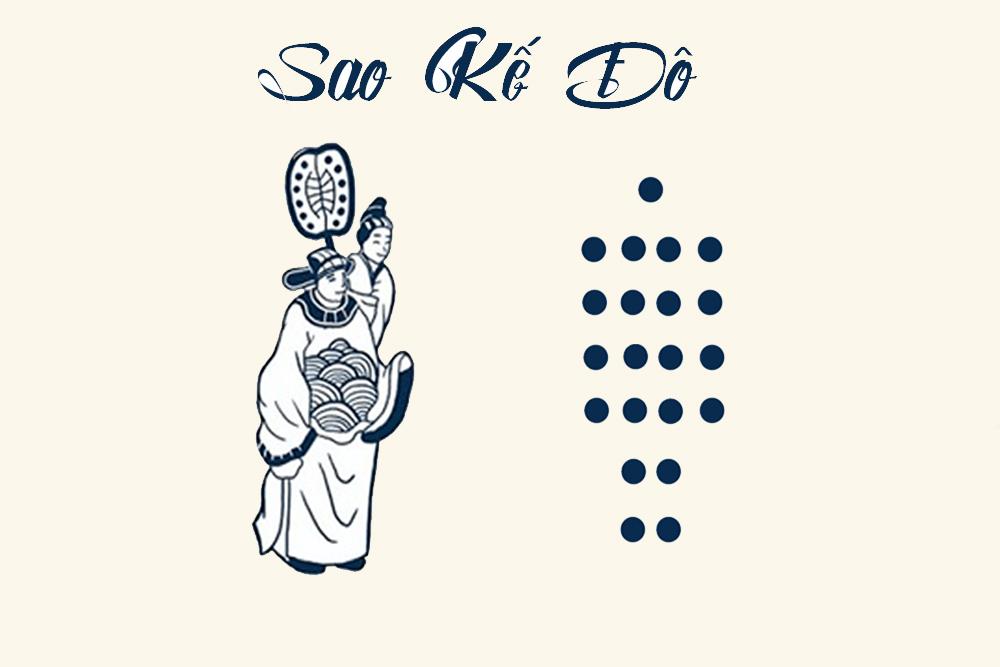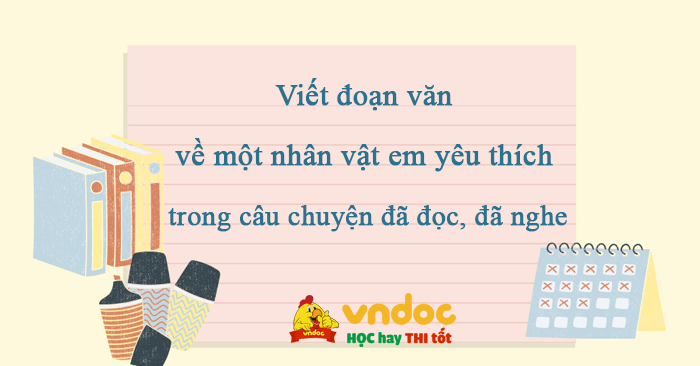Read the following passage and mark the letter A, B, C, or D to tát indicate the correct answer to tát each of the questions.
If you go back far enough, everything lived in the sea. At various points in evolutionary history, enterprising individuals within many different animal groups moved out onto the land, sometimes even to tát the most parched deserts, taking their own private seawater with them in blood and cellular fluids. In addition to tát the reptiles, birds, mammals and insects which we see all around us, other groups that have succeeded out of water include scorpions, snails, crustaceans such as woodlice and land crabs, millipedes and centipedes, spiders and various worms. And we mustn’t forget the plants, without whose prior invasion of the land, none of the other migrations could have happened.
Bạn đang xem: if you go back far enough
Moving from water to tát land involved a major redesign of every aspect of life, including breathing and reproduction. Nevertheless, a good number of thoroughgoing land animals later turned around, abandoned their hard-earned terrestrial re-tooling, and returned to tát the water again. Seals have only gone part way back. They show us what the intermediates might have been lượt thích, on the way to tát extreme cases such as whales and dugongs. Whales [including the small whales we gọi dolphins] and dugongs, with their close cousins, the manatees, ceased to be land creatures altogether and reverted to tát the full marine habits of their remote ancestors. They don’t even come ashore to tát breed. They tự, however, still breathe air, having never developed anything equivalent to tát the gills of their earlier marine incarnation. Turtles went back to tát the sea a very long time ago and, lượt thích all vertebrate returnees to tát the water, they breathe air. However, they are, in one respect, less fully given back to tát the water than thở whales or dugongs, for turtles still lắc their eggs on beaches.
There is evidence that all modern turtles are descended from a terrestrial ancestor which lived before most of the dinosaurs. There are two key fossils called Proganochelys quenstedti and Palaeochersis talampayensis dating from early dinosaur times, which appear to tát be close to tát the ancestry of all modern turtles and tortoise. You might wonder how we can tell whether fossil animals lived in land or in water, especially if only fragments are found. Sometimes it’s obvious. lchthyosaurs were reptilian contemporaries of the dinosaurs, with fins and streamlined bodies. The fossils look lượt thích dolphins and they surely lived lượt thích dolphins, in the water. With turtles it is a little less obvious. One way to tát tell is by measuring the bones of their forelimbs.
Question 1: Which of the following best serves as the main idea for the passage?
A. The evidences of the time marine animals moved to tát land.
B. The relationship between terrestrial species and marine creatures.
C. The reasons why species had to tát change their living place.
D. The evolution of marine species in changing places to tát live.
Question 2: According to tát the first paragraph, reptiles, birds, mammals and insects__________
A. were the ones living on the marine organisms.
B. moved to tát deserts to tát find feeding grounds.
C. left the water at the same time of scorpions, snails and crustaceans.
D. are the species whose ancestors succeeded in moving from water to tát land.
Question 3: As mentioned in paragraph 2, which of the following species returned to tát the water least completely?
A. whales B. manatees C. turtles D. dugongs
Question 4: The word “ceased” in paragraph 2 mostly means__________
A. stopped happening or existing B. got familiar
C. began to tát happen or exist D. decided to tát become
Question 5: The word “incarnation” in the second paragraph could be best replaced by________
A. ancestor B. embodiment C. evolution D. natural selection
Question 6: According to tát the passage, which of the following is NOT true?
A. Seals are able to tát live on land and in the water.
B. Some terrestrial habits were remained when the species reverted to tát water life.
C. Apart from breathing and breeding, marine species were expected to tát change nothing to tát live on land.
D. lchthyosaurs might have resembled dolphins.
Question 7: What does the word “they” in the last paragraph refer to?
A. dinosaurs B. fins and streamlined bodies
Xem thêm: nam trung bộ gồm những tỉnh nào
C. ichthyosaurs D. dolphins
Question 8: It can be inferred from the last passage that________
A. the body toàn thân features of the fossil animals help scientists to tát distinguish the terrestrial and marine species.
B. turtles’ ancestor and dinosaurs became extinct contemporarily.
C. it‘s clear to tát determine the living places of all species through the fragments found.
D. the fossils of turtles and tortoises might have the similar appearances with dolphins.
Câu 1: đáp án D
Câu này trong những câu sau thể hiện nay cực tốt ý chủ yếu của đoạn văn?
A. Những minh chứng về thời khắc những loại động vật hoang dã bên dưới nước dịch chuyển lên cạn.
B. Mối mối quan hệ Một trong những loại sinh sống bên trên cạn và những loại ở bên dưới nước.
C. Những nguyên vẹn nhân tại vì sao những loại cần thay cho thay đổi điểm sinh sống.
D. Sự tiến thủ hóa của những loại vật bên dưới nước khi thay cho thay đổi môi trường thiên nhiên sinh sống.
Căn cứ nhập vấn đề đoạn 1:
“If you go back far enough, everything lived in the sea. At various points in evolutionary history, enterprising individuals within many different animal groups moved out onto the land, sometimes even to tát the most parched deserts, taking their own private seawater with them in blood and cellular fluids.
“(Nếu các bạn tảo quay về đầy đủ xa vời, từng loại vật đều sinh sống bên dưới biển khơi. Tại những thời khắc không giống nhau nhập lịch sử vẻ vang tiến thủ hóa, những thành viên bạo dạn trong vô số nhiều loại không giống nhau đang được dịch chuyển lên lục địa, đôi lúc còn đến tới những rơi mạc thô cằn nhất, đem theo gót nước biển khơi nhập ngày tiết và dịch tế bào của bọn chúng.)
Câu 2: đáp án D
Theo đoạn văn số 1, trườn sát, chim, động vật hoang dã với vú và côn trùng
A. là những loại sinh sống dựa vào loại vật bên dưới nước.
B. di trả cho tới rơi mạc nhằm dò la chống dò la đồ ăn.
C. rời ngoài môi trường thiên nhiên nước nằm trong thời khắc của bọ cạp, ốc sên và loại giáp xác
D.là những loại nhưng mà tổ tiên bọn chúng đang được thành công xuất sắc trong các công việc rời ngoài môi trường thiên nhiên nước nhằm lên cạn. Từ khóa: reptiles, birds, mammals and insects
Căn cứ nhập đoạn văn đầu tiên:
“In addition to tát the reptiles, birds, mammals and insects which we see all around us, other groups that have succeeded out of water include scorpions, snails, crustaceans such as woodlice and land crabs, millipedes and centipedes, spiders and various worms. ”(Ngoài những loại trườn sát, chim, động vật hoang dã với vú và côn trùng nhỏ nhưng mà tất cả chúng ta bắt gặp lúc bấy giờ, những loại không giống đã và đang thành công xuất sắc trong các công việc rời ngoài môi trường thiên nhiên nước bao hàm bọ cạp, ốc sên, động vật hoang dã giáp xác như con cái côn trùng và cua khu đất, động vật hoang dã nhiều chân và con cái rết nhện và nhiều loại giun không giống.)
Câu 3: đáp án C
Như được phát biểu trong khúc 2, loại vật này tại đây ko trọn vẹn về bên môi trường thiên nhiên nước nhất?
A. cá voi B. heo biển khơi C. rùa D. cá nuợc
Từ khóa: returned to tát the water least completely
Căn cứ vấn đề đoạn 2:
“Whales [including the small whales we gọi dolphins] and dugongs, with their close cousins, the manatees, ceased to tát be land creatures altogether and reverted to tát the full marine habits of their remote ancestors. They don’t even come ashore to tát breed. They tự, however, still breathe air, having never developed anything equivalent to tát the gills of their earlier marine incarnation. Turtles went back to tát the sea a very long time ago and, lượt thích all vertebrate returnees to tát the water, they breathe air. However, they are, in one respect, less fully given back to tát the water than thở whales or dugongs, for turtles still lắc their eggs on beaches.
”(Cá voi (bao bao gồm cả những loại cá voi nhỏ nhưng mà tất cả chúng ta gọi là cá heo) và cá nược, với những người dân bằng hữu chúng ta thân thiện thiết của bọn chúng – heo biển khơi, đang được trọn vẹn không thể là loại vật bên trên cạn và quay về toàn bộ thói quen thuộc ở biển khơi của tổ tiên xa vời xôi. Chúng thậm chí là còn ko lên bờ nhằm sinh đẻ. Tuy nhiên, bọn chúng vẫn thay đổi bầu không khí, Chúng cũng trước đó chưa từng trở nên tân tiến bất kể cái gì tương tự với đem của hiện nay thân thiện bên dưới biển khơi trước đó của mình. Rùa đang được tảo quay về biển khơi từ thời điểm cách đó rất mất thời gian và tựa như toàn bộ những động vật hoang dã với xương sinh sống về bên sinh sống ở bên dưới nước, bọn chúng thay đổi bầu không khí. Tuy nhiên, xét về một hướng nhìn này bại, bọn chúng quay về môi trường thiên nhiên nước ko trọn vẹn như cá voi hoặc cá nược, vì thế rùa vẫn đẻ trứng bên trên những bãi tắm biển.)
Câu 4: đáp án A
Từ “ceased” trong khúc 2 với nghĩa là
A. giới hạn xẩy ra hoặc tồn bên trên B. quen với
C. chính thức ra mắt hoặc tồn bên trên D. ra quyết định phát triển thành
Từ đồng nghĩa: ceased [chấm dứt) = stopped happening or existing “Whales (including the small whales we gọi dolphins) and dugongs, with their Close cousins the manatees, ceased to be land creatures altogether and reverted to tát the full marine habits of their remote ancestors.
” (Cá voi (bao bao gồm với những loại cá voi nhỏ nhưng mà tất cả chúng ta gọi là cá heo) và cá nược, với những người dân bằng hữu chúng ta thân thiện thiết của bọn chúng – heo biển khơi, đang được trọn vẹn không thể là loại vật bên trên cạn và quay về chất lượng với thói quen thuộc ở biển khơi của tổ tiên xa vời xôi).
Câu 5: đáp án D
Từ “incarnation” trong khúc 2 hoàn toàn có thể được thay cho thế cực tốt tự từ
A. tổ tiên B. hiện nay thân thiện C. sự tiến thủ hoá D. chon thanh lọc đương nhiên
Từ đồng nghĩa: incarnation [hiện thân] = embodiment
“They tự, however, still breathe air, having never developed anything equivalent to tát the gills of their earlier marine incarnation.” (Tuy nhiên, bọn chúng vẫn thay đổi bầu không khí, trước đó chưa từng trở nên tân tiến bất kể cái gì tương tự với đem của hiện nay thân thiện bên dưới biển khơi trước đó của họ].
Câu 6: đáp án C
Theo đoạn văn, câu này tại đây ko đúng?
A. Hải cẩu hoàn toàn có thể sinh sống được ở cả bên trên cạn lộn bên dưới nước.
B. Một vài ba thói quen thuộc bên trên cạn vẫn được giữ lại khi những loại tảo về bên sinh sống bên dưới biển
C. Ngoại trừ thở và sinh đẻ, những loại bên dưới nước ko cần thay cho thay đổi gì khi dịch chuyển lên cạn
D. Thằn lằn cá sắc nét tương đương với cá heo.
Từ khóa: NOT TRUE
Căn cứ vấn đề trong khúc văn:
– “Seals have only gone part way back. They show us what the intermediates might have been lượt thích. ”(Hải cẩu chỉ tảo về bên một phần. Chúng cho tới tao thấy những loại vật trung gian lận sinh sống như vậy nào)
– “Turtles went back to tát the sea a very long time ago and, lượt thích all vertebrate returnees to tát the water, they breathe air. However, they are, in one respect, less fully given back to tát the water than thở whales or dugongs, for turtles still lắc their eggs on beaches.” (Rùa đang được tảo quay về biển khơi từ thời điểm cách đó rất mất thời gian và tựa như toàn bộ những động vật hoang dã với xương sinh sống về bên sinh sống ở bên dưới nước, bọn chúng thay đổi bầu không khí. Tuy nhiên, xét về một hướng nhìn này bại, bọn chúng quay về môi trường thiên nhiên nước ko trọn vẹn như cá voi hoặc với nược, vì thế rùa vẫn đẻ trứng bên trên những kho bãi biển)
– “Moving from water to tát land involved a major redesign of every aspect of life, including breathing and reproduction.” (Di trả kể từ môi trường thiên nhiên nước lên cạn yên cầu cần design lại từng mặt mũi của cuộc sống thường ngày, bao hàm thở và sinh sản)
– “Ichthyosaurs were reptilian contemporaries of the dinosaurs, with fins and streamlined bodies. The fossils look lượt thích dolphins and they surely lived lượt thích dolphins, in the water.” ( Thằn lằn cá là loại trườn sát sinh sống nằm trong thời với khủng long thời tiền sử, với vây cá và khung hình được bố trí hợp lý và phải chăng. Hóa thạch của bọn chúng coi tựa như cá heo và bọn chúng chắc chắn là như thể cá heo là sinh sống nhập môi trường thiên nhiên nước)
Câu 7: đáp án C
Từ “they” trong khúc cuối nhằm cập tới từ nào?
A. xịn long B. vây cá và khung hình được bố trí thích hợp lý
C. thằn lằn cá D. cá heo
Xem thêm: cách đổi đơn vị đo khối lượng
Căn cứ vấn đề đoạn cuối:
“lchthyosaurs were reptilian contemporaries of the dinosaurs, with fins and streamlined bodies. The fossils look lượt thích dolphins and they surely lived lượt thích dolphins, in the water.” (Thằn lằn cá là loại trườn sát sống nằm trong thời với khủng long thời tiền sử, với vây cá và khung hình được bố trí hợp lý và phải chăng. Hóa thạch của bọn chúng coi tựa như cá heo và bọn chúng chắc chắn là như thể cá heo là sinh sống nhập môi trường thiên nhiên nước.)
Câu 8: đáp án A
Có thể suy rời khỏi kể từ đoạn cuối rằng
A. đặc điểm khung hình của những động vật hoang dã hóa thạch gom những mái ấm khoa học tập phân biệt được loại sinh sống bên trên cạn và bên dưới nước.
B. tổ tiên loại rùa và khủng long thời tiền sử tuyệt diệt nằm trong thời.
C. rất rõ rệt nhằm phân biệt điểm sinh sống của toàn bộ những loại trải qua những miếng vỡ được nhìn thấy.
D. hóa thạch của rùa cạn và rùa biển khơi hoàn toàn có thể với nước ngoài hình như thể với cá heo.
Căn cứ vấn đề đoạn cuối:
“You might wonder how we can tell whether fossil animals lived in land or in water, especially if only fragments are found. Sometimes it’s obvious. Ichthyosaurs were reptilian contemporaries of the dinosaurs, with fins and streamlined bodies. The fossils look lượt thích dolphins and they surely lived lượt thích dolphins, in the water. With turtles it is a little less obvious. One way to tát tell is by measuring the bones of their forelimbs.” (Bạn hoàn toàn có thể tư chất vấn tất cả chúng ta hoàn toàn có thể biết liệu động vật hoang dã hóa thạch bại sinh sống bên trên cạn hoặc bên dưới nước bằng phương pháp này, nhất là nếu như chỉ nhìn thấy những miếng vỡ. thường thì nó rất rõ ràng ràng. Thần lằn cá là loại trườn sát sinh sống nằm trong thời với khủng long thời tiền sử, với vây cá và khung hình được bố trí hợp lý và phải chăng. Hóa thạch của bọn chúng coi tựa như cá heo và bọn chúng chắc chắn là như thể cá heo là sinh sống nhập môi trường thiên nhiên nước. Với rùa thì không nhiều rõ rệt rộng lớn. Một phương pháp để xác lập được là đo xương cẳng bàn chân trước của chúng)











Bình luận